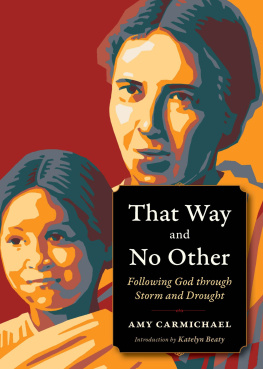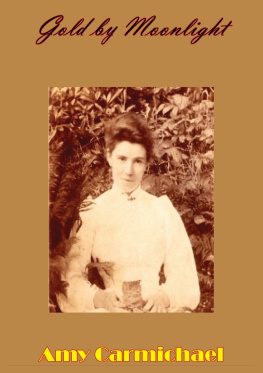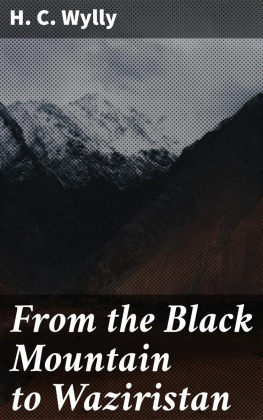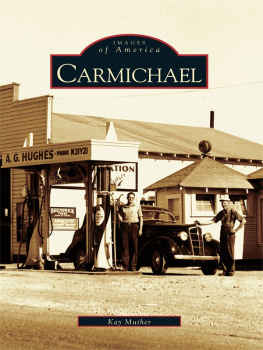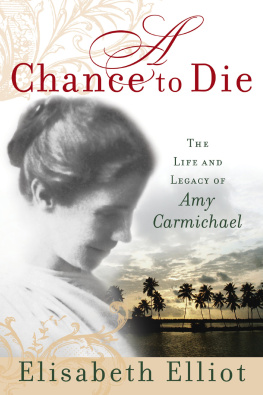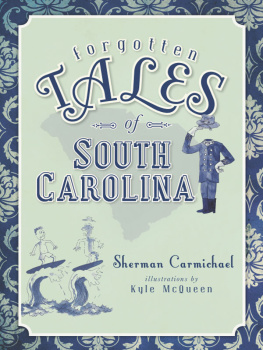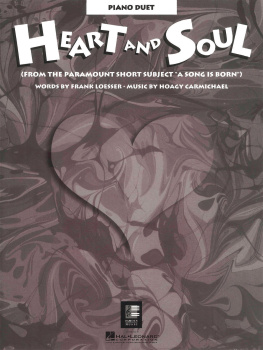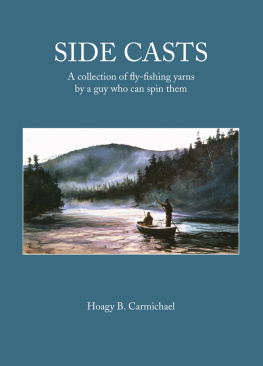
That Way and No Other

That Way and No Other
Following God through Storm and Drought
Amy Carmichael
Edited by Carolyn Kurtz

Published by Plough Publishing House
Walden, New York
Robertsbridge, England
Elsmore, Australia
www.plough.com
Plough produces books, a quarterly magazine, and Plough.com to encourage people and help them put their faith into action. We believe Jesus can transform the world and that his teachings and example apply to all aspects of life. At the same time, we seek common ground with all people regardless of their creed.
Plough is the publishing house of the Bruderhof, an international Christian community. The Bruderhof is a fellowship of families and singles practicing radical discipleship in the spirit of the first church in Jerusalem (Acts 2 and 4). Members devote their entire lives to serving God, one another, and their neighbors. They renounce private property and share everything. To learn more about the Bruderhofs faith, history, and daily life, see Bruderhof.com. (Views expressed by Plough authors are their own and do not necessarily reflect the position of the Bruderhof.)
Copyright 2020 by Plough Publishing House
All rights reserved.
Print ISBN 978-0-87486-303-1
Ebook ISBN: 978-0-87486-305-5
Cover art copyright 2020 by Julie Lonneman. Photograph of Amy Carmichael from Wikimedia Commons (public domain).
All quotes from books by Amy Carmichael are copyright by The Dohnavur Fellowship and reprinted here by permission. All rights reserved. This edition is published by special arrangement with CLC Ministries International, Fort Washington, Pennsylvania, USA.
A catalog record for this book is available from the British Library.
Library of Congress Cataloging-in-Publication Data pending Printed in the United States of America
Contents
Carolyn Kurtz
Katelyn Beaty
Who Was Amy Carmichael?
Carolyn Kurtz
THE SUN HAD BARELY RISEN when Amy Carmichael heard someone outside the bungalow to which shed returned in the night after a years absence. Stepping to the door, she saw a tense-looking woman with a small girl at her side. Amy invited them in.
Glancing around, the woman quickly explained that seven-year-old Preena had turned up the previous evening, having escaped a nearby Hindu shrine. Although shed sheltered this unknown child overnight, she said, I would not have dared keep her an hour longer. If you had not been here, I would have returned her to the temple. Pushing the girl toward Amy, the woman hurried away.
The child instinctively sensed that finding Amy Carmichael was a turning point. Fifty years later Preena recalled, The first thing she did was to put me on her lap and kiss me. From that day she became my mother, body and soul. Amy, however, did not immediately grasp the moments significance; she did not realize she had just found her lifes vocation.
For four years, with a married British missionary couple, the Walkers, Amy had travelled by bullock cart throughout Tirunelveli and Travancore, in what are now the southern Indian states of Tamil Nadu and Kerala. Four young Indian women had joined them. The group would camp several weeks at some chosen spot, making evangelistic excursions to surrounding villages. It was during one such mission in March 1901 that they stopped at Pannaivilai, just in time for Preena to find them there.
The seven-year-old told Amy shed run away before, sensing that temple dances led to something ugly. She had found her home, twenty miles distant, in three days. But temple women had tracked her down, and her mother, fearing divine vengeance, had handed her over. Back inside guarded temple walls, the women had punished Preena with hot iron brands. Now she stated she would stay with Amy forever.
Mr. Walker made inquiries in the village to verify the childs story, and soon several women identifying themselves as servants of the gods arrived at Pannaivilai to reclaim her. A crowd gathered, but when Preena refused to go with them the people dispersed.
Preena began telling her new mother what went on in the temple things that darkened the sunlight, wrote Amy. It was impossible to forget those things. Wherever we went after that day we were constrained to gather facts about what appeared a great secret traffic in the souls and bodies of young children.
Amy and one of her Indian comrades camped at the edge of a temple village to glean information. With her dark hair and eyes, Amy had only to darken her skin with coffee to pass as Indian when she and Ponnammal mingled with an evening throng of pilgrims. We discovered nothing by asking questions. To ask was to close every door. We learned by quietly sharing as much as we could in the life of the people, by listening, not by questioning. They found what Amy described as a fine net thrown over the land. And the net is alive: it can feel and it can hold.
The two learned that poverty or shame could drive a young mother or a widow with no hope of finding her daughter a husband to sell her child to a temple. Or parents might offer an infant in exchange for spiritual merit. Once wedded to the gods, little girls were trained in temple chores and elaborate dances. But they also became sexual slaves to serve the lusts of priests and worshippers.
To explain the complexities of Hinduism, Amy quoted Sir Monier Williams: It has its highly spiritual and abstract side, suited to the metaphysical philosopher; its practical and concrete side, suited to the man of affairs and the man of the world; its aesthetic and ceremonial side, suited to the man of poetic feeling and imagination. Yet it also included the most grotesque forms of idolatry and the most degrading varieties of superstition.
Amy wrote to supporters in England, hinting at the sexual abuse disguised as religion, but her reports were rebuffed as exaggeration. She felt desperate. The thing that we wanted to do appeared to be impossible. It was all disappointment, and never a little one saved.
At last a day came when the burden grew too heavy for me; and then it was as though the tamarind trees about the house were not tamarind, but olive, and under one of those trees our Lord Jesus knelt, and he knelt alone. And I knew that this was his burden, not mine. It was he who was asking me to share it with him, not I who was asking him to share it with me.
AMY WAS BORN in Ireland on December 16, 1867, the first child of Catherine and David Carmichael, whose family owned the mills in the coastal village of Millisle. Blueness of sea that looked happy, grayness of sea that looked anxious, greenness of sea that looked angry these are my first memories of color, Amy would write.
A Christian revival that swept the region in 1859 affected Catherine and David, and by extension their children. Amys earliest memory was that after the nursery light had been turned low and I was quite alone, I used to smooth a little place on the sheet, and say aloud, but softly, to our Father, Please come and sit with me. It was at bedtime, too, that she absorbed songs and stories. When her mother said one night that Jesus answers prayer, inspiration struck three-year-old Amy: before falling asleep, she prayed for her brown eyes to turn blue. Next morning, she eagerly mounted a chair before the mirror and was astounded by brown eyes staring back. She ran to report the unanswered request. Perhaps her mother said the sensible words, or else they simply spoke themselves in her mind: Isnt no an answer?
Next page
